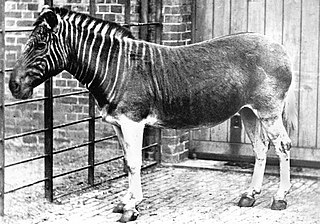
The quagga is a subspecies of the plains zebra that was endemic to South Africa until it was hunted to extinction in the late 19th century. It was long thought to be a distinct species, but early genetic studies have supported it being a subspecies of plains zebra. A more recent study suggested that it was the southernmost cline or ecotype of the species.
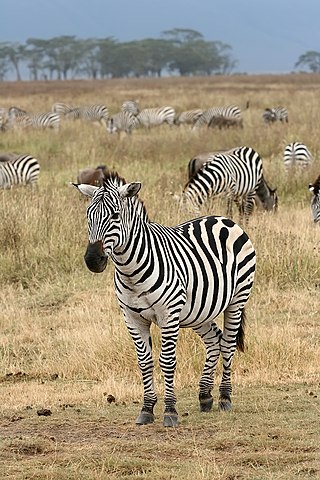
Zebras are African equines with distinctive black-and-white striped coats. There are three living species: the Grévy's zebra, plains zebra, and the mountain zebra. Zebras share the genus Equus with horses and asses, the three groups being the only living members of the family Equidae. Zebra stripes come in different patterns, unique to each individual. Several theories have been proposed for the function of these stripes, with most evidence supporting them as a deterrent for biting flies. Zebras inhabit eastern and southern Africa and can be found in a variety of habitats such as savannahs, grasslands, woodlands, shrublands, and mountainous areas.

The plains zebra, also known as the common zebra, is the most common and geographically widespread species of zebra. Its range is fragmented, but spans much of southern and eastern Africa south of the Sahara. Six or seven subspecies have been recognised, including the extinct quagga which was thought to be a separate species. More recent research supports variations in zebra populations being clines rather than subspecies.

Just So Stories for Little Children is a 1902 collection of origin stories by the British author Rudyard Kipling. Considered a classic of children's literature, the book is among Kipling's best known works.

Horse-flies or horseflies are true flies in the family Tabanidae in the insect order Diptera. They are often large and agile in flight. Only female horseflies bite animals, and humans, to obtain blood. They prefer to fly in sunlight, avoiding dark and shady areas, and are inactive at night. They are found all over the world except for some islands and the polar regions. Both horse-flies and botflies (Oestridae) are sometimes referred to as gadflies.
Professor Geoffrey Alan Parker FRS is an emeritus professor of biology at the University of Liverpool and the 2008 recipient of the Darwin Medal. Parker has been called “the professional’s professional”.
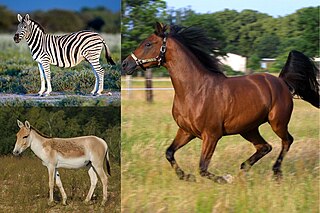
Equus is a genus of mammals in the family Equidae, which includes horses, donkeys, and zebras. Within the Equidae, Equus is the only recognized extant genus, comprising seven living species. Like Equidae more broadly, Equus has numerous extinct species known only from fossils. The genus most likely originated in North America and spread quickly to the Old World. Equines are odd-toed ungulates with slender legs, long heads, relatively long necks, manes, and long tails. All species are herbivorous, and mostly grazers, with simpler digestive systems than ruminants but able to subsist on lower-quality vegetation.

Anti-predator adaptations are mechanisms developed through evolution that assist prey organisms in their constant struggle against predators. Throughout the animal kingdom, adaptations have evolved for every stage of this struggle, namely by avoiding detection, warding off attack, fighting back, or escaping when caught.

Aposematism is the advertising by an animal to potential predators that it is not worth attacking or eating. This unprofitability may consist of any defenses which make the prey difficult to kill and eat, such as toxicity, venom, foul taste or smell, sharp spines, or aggressive nature. These advertising signals may take the form of conspicuous coloration, sounds, odours, or other perceivable characteristics. Aposematic signals are beneficial for both predator and prey, since both avoid potential harm.
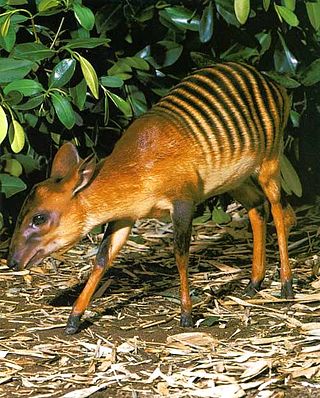
The zebra duiker is a small antelope found primarily in Liberia, as well as the Ivory Coast, Sierra Leone, and occasionally Guinea. They are sometimes referred to as the banded duiker or striped-back duiker. It is believed to be one of the earliest duiker species to have evolved.
In evolutionary biology, function is the reason some object or process occurred in a system that evolved through natural selection. That reason is typically that it achieves some result, such as that chlorophyll helps to capture the energy of sunlight in photosynthesis. Hence, the organism that contains it is more likely to survive and reproduce, in other words the function increases the organism's fitness. A characteristic that assists in evolution is called an adaptation; other characteristics may be non-functional spandrels, though these in turn may later be co-opted by evolution to serve new functions.

Animal coloration is the general appearance of an animal resulting from the reflection or emission of light from its surfaces. Some animals are brightly coloured, while others are hard to see. In some species, such as the peafowl, the male has strong patterns, conspicuous colours and is iridescent, while the female is far less visible.

Robin Baker is a British novelist, popular science writer, lecturer and broadcaster. A best-selling author in the field of sexual biology his books have been translated into 27 different languages. These include the international bestseller Sperm Wars which was based on his own lab's original research on human sexuality. His work and ideas on the evolution of human behaviour have been featured in many radio and television programmes around the world.
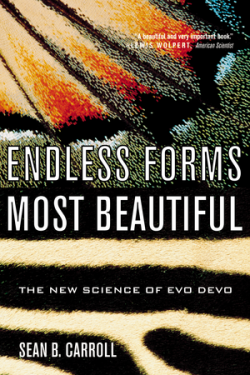
Endless Forms Most Beautiful: The New Science of Evo Devo and the Making of the Animal Kingdom is a 2005 book by the molecular biologist Sean B. Carroll. It presents a summary of the emerging field of evolutionary developmental biology and the role of toolkit genes. It has won numerous awards for science communication.
Timothy Robert Birkhead is a British ornithologist. He has been Professor of Behaviour and Evolution at the University of Sheffield since 1976.
Martin Stevens is a British sensory and evolutionary ecologist, known for his work on animal camouflage, especially disruptive coloration.
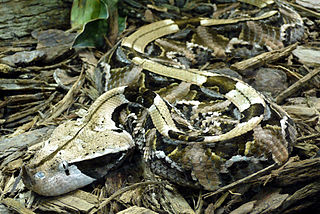
Disruptive eye masks are camouflage markings that conceal the eyes of an animal from its predators or prey. They are used by prey, to avoid being seen by predators, and by predators to help them approach their prey. The eye has a distinctive shape and dark coloration dictated by its function, and it is housed in the vulnerable head, making it a natural target for predators. It can be camouflaged by a suitable disruptive pattern arranged to run up to or through the eye, sometimes forming a camouflage eyestripe. The illusion is completed in some animals by a false eye or false head somewhere else on the body, in a form of automimicry.
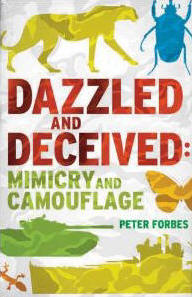
Dazzled and Deceived: Mimicry and Camouflage is a 2009 book on camouflage and mimicry, in nature and military usage, by the science writer and journalist Peter Forbes. It covers the history of these topics from the 19th century onwards, describing the discoveries of Henry Walter Bates, Alfred Russel Wallace and Fritz Müller, especially their studies of butterflies in the Amazon. The narrative also covers 20th-century military camouflage, begun by the painter Abbot Thayer who advocated disruptive coloration and countershading and continued in the First World War by the zoologist John Graham Kerr and the marine artist Norman Wilkinson, who developed dazzle camouflage. In the Second World War, the leading expert was Hugh Cott, who advised the British army on camouflage in the Western Desert.
Patricia "Patty" Brennan is a Colombian and American evolutionary biologist and behavioral ecologist. She is a professor of biology at Mount Holyoke College, and her research focuses on sexual selection, sexual conflict, and genital coevolution in vertebrates.















